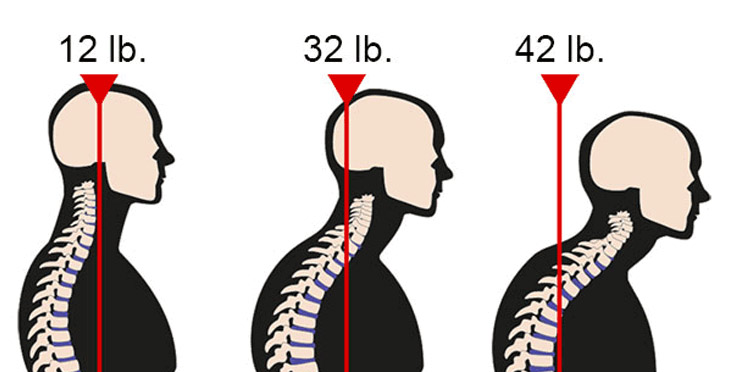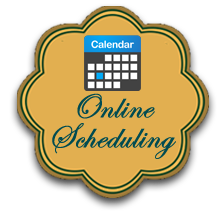
How Heavy is Your Head and What is Upper Cross Syndrome?
04-04-21
The human body is amazing. It has many muscles that make up the musculoskeletal components of the body that are all interconnected in some way or another. The body works in a beautiful synergy, when one muscle engages, the opposite relaxes and vice versa, to create movement and motion.
When the muscles become injured or weakens, another muscle will pick up the slack and take on the job to make up for it. We often see this in poor posture of the upper body, but it can occur anywhere on the body. Upper cross syndrome develops when there are a group of overactive and under-active muscles in the neck, chest and shoulder. This is how the condition gets its name, from the “x” shape that develops from the overactive and under-active muscle groups. If poor posture is the cause of upper cross syndrome then we often have weak rhomboids (located between the spine and shoulder blades) and neck muscles. The pectorals and upper trapezius muscles become extremely tight.
As the muscle imbalances occur, it causes the vertebrae to get torques and twisted. This sends nerve signals to your brain that something is wrong. The pain that is felt commonly occurs when the traps and pecs tighten. An intense pain is noticeable in the neck, shoulder and there will be a loss of range of motion.
 How Does it Occur?
How Does it Occur?
There are many potential causes for upper cross syndrome, but, the major two are from prolonged poor posture and sedentary lifestyle. The many hours of sitting, looking down and staring at screens can cause this imbalance. It can also occur if you are athletic and overbuild one set of muscles and not the opposite groups. These activities don’t cause pain; not taking breaks and adequate contracting postures tend to create the pain and imbalance.
The head is typically in alignment with the shoulders. This allows the weight of the head, approximately 10-12 pounds to balance without any issues. When the head is farther forward than the neutral position it creates more stress on the upper back and neck muscles. The longer you sit with the head and shoulders forward, the more normal it feels and the syndrome starts to develop where it continuously puts stress on the upper body throughout your activities.
What is even crazier is that you might feel as if your head feels heavier and even feel fatigued carrying it around. Your head didn’t gain any extra weight. This is just a form of physics. The further your head is pushed forward, the more strain is put onto the body’s structure; making that head weigh 45 pounds due to the pressure it is creating.
Symptoms
The most common symptom is the rounded shoulders. A small hunch may appear at the connection area between the neck and shoulders. The head will start to move forward and there will be a change in the spine curvature especially in the neck and upper back.
As the stress occurs on the surrounding muscles and muscles deforms from upper cross syndrome, these symptoms develop:
- Headache
- Neck pain
- Strain in back of neck and weakness in the front
- Chest pain and tightness
- Pain in upper back and shoulders
- Sore shoulder blades
- Jaw pain
- Tiredness
- Difficulty doing sitting activities like reading, watching tv, and looking at phone
- Difficulty driving due to pain or muscle tightness and soreness
- Limited/restricted range of motion in neck and shoulders
- Numbness, tingling and pain in upper arms
- Pain/limited range of motion in ribs
- Low back pain
- Elbows may be flexed or are challenging to keep the arms straight.
Treatment
Upper cross syndrome is treatable before it becomes a chronic posture issue. Massage, chiropractic, physical therapy are common effective treatment remedies. Many of the issues can be addressed with combining stretching, strengthening weak muscles, soft tissue manipulation, using corrective posture management and adjustments.
Prevention
There are simple preventative care techniques and you may need to make some lifestyle adjustments as needed if this is an ongoing thing for you.
- If you sit at a desk for a long period of time, do stretches and take breaks for a few minutes after every 15-30minute increments of sitting.
- Set screen time
- Adjust your desk and chair to ensure you are sitting or standing with good posture.
- Make sure the phone,book, tv, or computer screen is sitting at eye level.
- Do posture checks in the mirror and see where your head, shoulders, and back are aligned.
- Exercise 30 minutes daily using low-impact activities, for example walking or swimming.
- Do stretches that target the sore muscles in the back of the neck, shoulders and chest
- Do strengthening exercises that target the weakened muscles in front of the neck, shoulders and chest
- Lumbar rolls in chair are helpful at maintaining posture
- Use a single pillow that retains its shape.
- Massage therapy, adjustments, acupuncture, and/or physical therapy as needed.
Massage Therapy
Massage is a great treatment for upper cross syndrome. As massage therapists, we can target the hypertension muscles and work on trigger points to relieve pain and help regain range of motions. By relaxing the muscle groups, it creates balance and prevents them from torquing the spinal and body structure. With massage, the muscles can be re-educated to the proper posture and learn how to work in synergy again.
Schedule for your massage today and give yourself the care you need to live a pain-free lifestyle.


